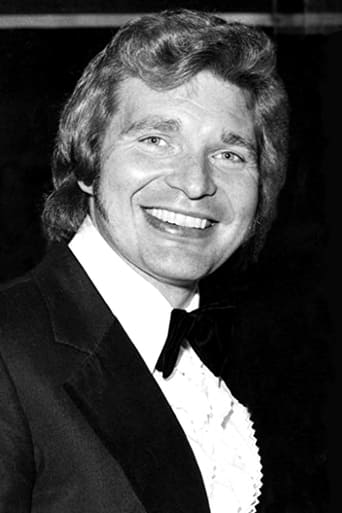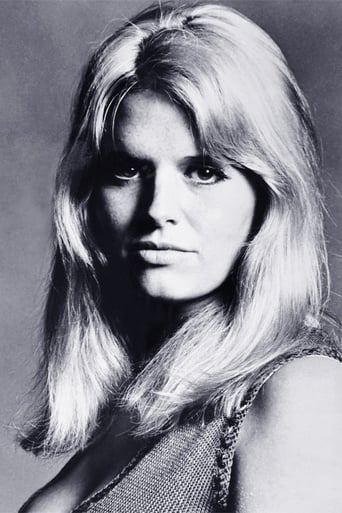MARIO GAUCI
Mentioned in the sole IMDb comment on the recently-viewed Italian thriller TI ASPETTERO' ALL' INFERNO (1960) as being similar, this is even less of a ghost story than that one was – the haunting being relegated to the very last scene – but at least it does not cheat and have the 'manifestations' revealed as gimmicks! Anyway, this is one of an outburst of British B-movies (pretty much the equivalent of the 'quota quickies' of the 1930s but clearly having greater merit) which came out throughout the first half of the decade: most were thrillers and ran barely an hour in length (this one, in fact, clocks in at 54 minutes!). As far as I can recall, the only previous title I watched in this vein had been STRONGROOM (1962) – with which this shares director and leading man (Derren Nesbitt) – a long time ago early one morning on Italian TV…but have just acquired Sewell's HOUSE OF MYSTERY (1961; a genuine 'haunted house' movie this time around!) in time for this Halloween challenge, and also own at least two more i.e. THE IMPERSONATOR (1960) and THE TRAITORS (1962) in my collection. THE MAN IN THE BACK SEAT, then, is the 'ghost' in question, a bookie beaten up and abducted (since the money bag is chained to his wrist!) by "layabout" Nesbitt (with one leg in a cast!) and his married associate (Keith Faulkner); much of the proceedings take place in the car as everything seems to go wrong thereafter, and the couple are forced to drive around all night carrying their quarry – his life slowly ebbing away – with them. Faulkner wants to drive him to a hospital but the entry is blocked by security guards; the car gets a flat tyre and subsequently runs out of fuel – both of these bad breaks re-enforces Nesbitt's decision to get rid of the bookie, but they next attempt to have the man treated by a neighboring doctor who, suspecting foul play, does not want to get involved (so Nesbitt pays for his services, and his silence, with the blood money itself!). In the meantime, Faulkner's wife (Carol White) also becomes an unwitting accomplice, especially after having come across the secreted money bag; the robbers even try to dump their hapless victim on the street and make it look like he is a drunk, but Nesbitt had carelessly removed his gloves to douse him in alcohol – trying to rectify this mistake, the two are interrupted by a policeman on patrol so, they have to once more take to the road in tandem. Eventually, the man bites the dust as the other two are trying to reach yet another hospital; on their way to "scarper" from the scene of his final disposal, Faulkner begins to get paranoid – not only thinking every other car is the police chasing them, but he even keeps seeing the dead man's face in the rear-view mirror, which leads him to run their vehicle off the road into a ravine below. Nesbitt is killed instantaneously yet Faulkner barely survives and, when the police arrive, pleads with them to see to the third passenger…but the car blows up before they can do anything about it! Terse, gripping and stylish, the film makes for a sterling example of just what can be accomplished even with meager resources.
FilmFlaneur
(Spoilers)Writer, documentarist and director Sewell is one of those half-forgotten figures in British cinema whose work can still give considerable pleasure today, even though his long career (over 35 years and over 40 films) never reached the heights. His ‘Latin Quarter'(1945), an excellent horror film, was released in the week after the now much better-known ‘Dead of Night', broke the war-time horror movie moratorium in the UK. A few years later, and he was regularly working on less prestigious productions, including several taut low budget thrillers, that typically included supernatural elements, during the early 60's. ‘House of Mystery' (1961) ‘Strongroom' (1962) and, above all ‘The Man in the Back Seat' are amongst his best work, much better than many other undistinguished ‘quota quickies' of the time, each making a virtue out of the necessities of brevity, and budget.Small-time crooks Tony and Frank rob a track bookie, discover that his money is in a security bag chained to his wrist and, having first piled their victim into the back of his own vehicle, make off with him in a panic. The injured bookie remains huddled there for most of the film thereafter, as the two grow increasingly desperate seeking his disposal. Although mute, he is as much a ‘character' as the two leads, his silence making its own accusation. This is the case from the very start. The title and credits of the film roll out over a defining shot (one repeated often as a point of view through coming scenes), in which we are looking through the windscreen at Frank driving. Tony peers forwards from the back, anxious and expectant. Next to Tony is an empty seat, an unoccupied space to our minds already tainted with foreboding even before the opening crime. Even when, as is usual, he is invisible to the audience, the bookie's presence remains oppressive. The stricken passenger is both a symbol-in-situ of Frank and Tony's transgression, and a precognition of their fate.Whenever the two try and ditch their inert charge, some accident intervenes, making the guilty go on again with their burden. They can't open the bag without tools. They park in front of a busy garage door to try and open the bag, and are brusquely moved on. They get a blowout, and a suspicious road service man helps them on their way. They run out of petrol. They can drop the bookie, then urgently have to reclaim him, and a policeman confronts them at the roadside, and so on. Frank and Tony's desperate ride feels, and is, ultimately futile. Most obviously through the final catastrophe, on their drive up North. But it is also a circular journey: their crime is committed at a racetrack, the car stolen, the victim abducted. By the time they finally come to shake off the body, in order to make their final escape, they are back at a dog track again - as if none of their previous journeying had happened, or mattered. The all-pervasive nature of ‘fate' in this film is similar to that found in some of Fritz Lang's noir work of a few years earlier, where no man is immune to the faceless forces that buffet and frustrate him at every time..Benefiting from some excellent, atmospheric, night-time location shooting, ‘The Man in The Back Seat' has been dubbed an ‘anxiety dream' by one critic (David Pirie), and that is certainly true: as events succeed each other they have the quality of a nightmare. But this is also a film with supernatural overtones. The bookie's slumped body comes to haunt the two men (and at the end actually appears in the mirror as an accusing apparition to a startled Frank), like the ghost at Macbeth's feast, staring in silent recrimination of their crime. The fatal nature of this hallucination is emphasised at the close of the picture, with an audio ‘exclamation mark'. Frank painfully whispers the title of the film and, at that instant, the burning car explodes.At the centre of the film is the relationship between Frank and Tony (Derren Nesbit and Keith Faulkener, who also act together in Sewell's ‘Strongroom'). As Frank, the dominant of the two, Nesbit gives an excellent (and entirely characteristic) early performance. Soft spoken, wiley, immoral, and with a black sense of humour, he is an utterly contemptible villain. Normally restricted to supporting role status, here he is perfectly at ease in the low-life mileu Tony inhabits. His character also has a prominent handicap, his leg in plaster giving a visual echo of his crippling moral shortcomings. As the more conscience-stricken and weaker Frank, Faulkener gives a creditable performance. Biggest surprise is to realise that his girlfriend, Jean, is played by Carol White, later star of Ken Loach's ‘Poor Cow' and the historically important UK TV drama ‘Cathy Come Home'.‘The Man in The Back Seat' is probably unavailable on video and only surfaces occasionally on late night television. It is a salutory reminder of what gems still lay unnoticed in the backwater of British film, when critical attention is often focused elsewhere. As an outstanding example of what imagination can achieve on an enforced budget, and as a tour-de-force of fatalistic cinema, rare in English film, it is well worth seeking out.



